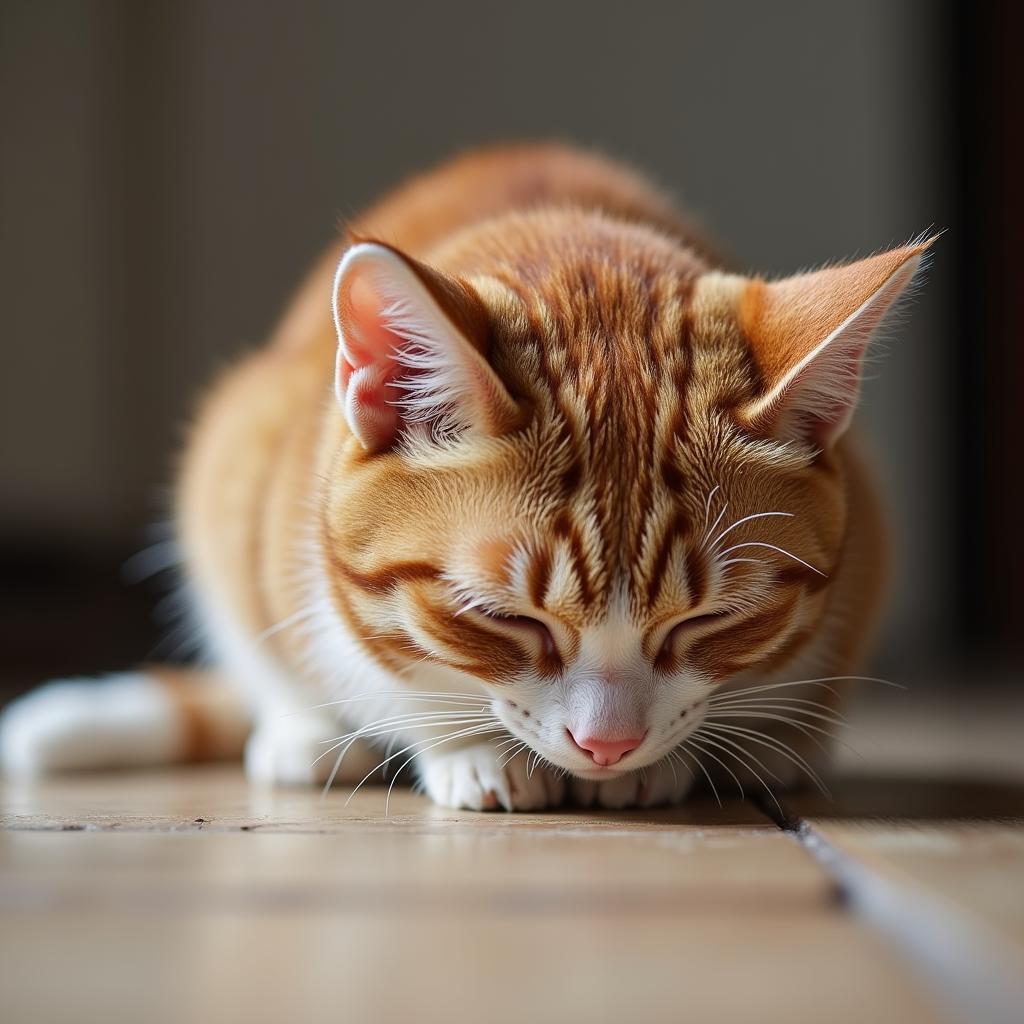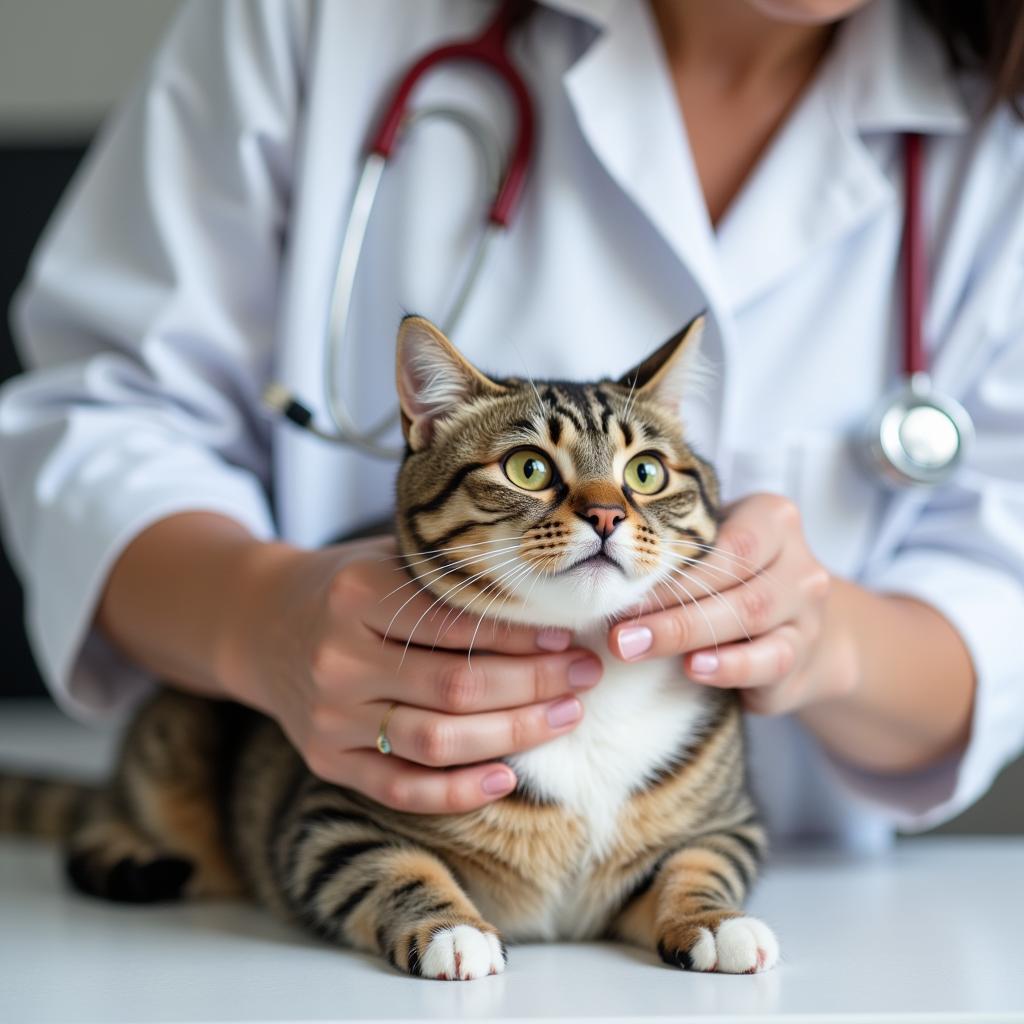Finding the Best Cat Food For Malabsorption can be a challenge. If your feline friend is struggling with this digestive issue, choosing the right diet is crucial for their health and well-being. This article will delve into the complexities of malabsorption in cats and guide you toward selecting the most suitable food to alleviate your cat’s symptoms and improve their quality of life.
 Cat showing signs of digestive discomfort, such as vomiting or diarrhea
Cat showing signs of digestive discomfort, such as vomiting or diarrhea
Understanding Feline Malabsorption
Malabsorption is a condition where a cat’s digestive system can’t properly absorb nutrients from food. This can lead to various health problems, including weight loss, diarrhea, vomiting, and a dull coat. There are numerous causes of malabsorption, ranging from food intolerances and inflammatory bowel disease (IBD) to pancreatic insufficiency and small intestinal bacterial overgrowth (SIBO).
What to Look for in the Best Cat Food for Malabsorption
When selecting the best cat food for malabsorption, certain key factors should be considered. Highly digestible ingredients are essential, as they are easier for the cat’s compromised digestive system to process. Look for foods with limited ingredient lists, avoiding artificial colors, flavors, and preservatives, which can irritate a sensitive gut.
Hydrolyzed Protein: A Game Changer
Hydrolyzed protein diets break down proteins into smaller particles, making them less likely to trigger an immune response and easier to absorb. This is especially helpful for cats with food allergies or intolerances that contribute to their malabsorption.
Novel Protein Sources: Exploring New Options
Novel proteins are protein sources that the cat hasn’t been exposed to before, such as duck, venison, or kangaroo. These can be beneficial for cats with food allergies, as their immune system is less likely to react to them.
Why is the Right Food So Important?
The right food is crucial for managing malabsorption because it provides the necessary nutrients in a form that the cat’s body can absorb. This helps to alleviate symptoms, improve overall health, and prevent further complications.
How Can I Tell if My Cat Has Malabsorption?
Common signs of malabsorption include chronic diarrhea, vomiting, weight loss despite a good appetite, and a dull, dry coat. If you notice any of these symptoms, it’s crucial to consult with a veterinarian.
Choosing the Right Food: A Step-by-Step Guide
- Consult your veterinarian: They can diagnose the underlying cause of malabsorption and recommend the best dietary approach for your cat.
- Look for highly digestible ingredients: Opt for foods with hydrolyzed protein or novel protein sources.
- Choose a limited ingredient diet: Minimize potential allergens and irritants.
- Monitor your cat’s response: Track their symptoms and adjust the diet as needed.
 A veterinarian performing a physical examination on a cat to diagnose the cause of its malabsorption.
A veterinarian performing a physical examination on a cat to diagnose the cause of its malabsorption.
“Proper nutrition is the cornerstone of managing malabsorption in cats,” says Dr. Emily Carter, DVM, a board-certified veterinary nutritionist. “Choosing a diet that addresses the cat’s specific needs is essential for improving their health and well-being.”
Conclusion
Choosing the best cat food for malabsorption requires careful consideration of your cat’s individual needs and the underlying cause of their condition. By working closely with your veterinarian and following the guidelines outlined in this article, you can help your cat achieve optimal digestive health and enjoy a better quality of life. Remember, finding the right food can make a world of difference for a cat struggling with malabsorption.
FAQs
- What is the most common cause of malabsorption in cats? Inflammatory bowel disease (IBD) and food allergies are common culprits.
- Can malabsorption be cured? While some underlying causes can be treated, often the focus is on managing the condition through dietary changes.
- Are homemade diets suitable for cats with malabsorption? It’s best to consult with a veterinary nutritionist before attempting a homemade diet.
- How long does it take to see improvement after switching to a new diet? It can take several weeks or even months to see significant changes.
- What are some other signs of malabsorption besides diarrhea and vomiting? Weight loss, poor coat condition, and lethargy can also be indicators.
- Are there any supplements that can help with malabsorption? Your veterinarian may recommend specific supplements based on your cat’s needs.
- How can I make the transition to a new food easier for my cat? Gradually mix the new food with the old food over a period of 7-10 days.
“Finding the right food can be a game changer for a cat suffering from malabsorption,” adds Dr. Sarah Miller, a veterinary gastroenterologist. “It’s not just about alleviating symptoms; it’s about improving their overall quality of life.”
For further assistance, please contact us: Phone: 02437655121, Email: minacones@gmail.com Or visit us at: 3PGH+8R9, ĐT70A, thôn Trung, Bắc Từ Liêm, Hà Nội, Việt Nam. We have a 24/7 customer service team.